Belt Sander vs Orbital Sander: Which to Choose?
-
- Last updated:
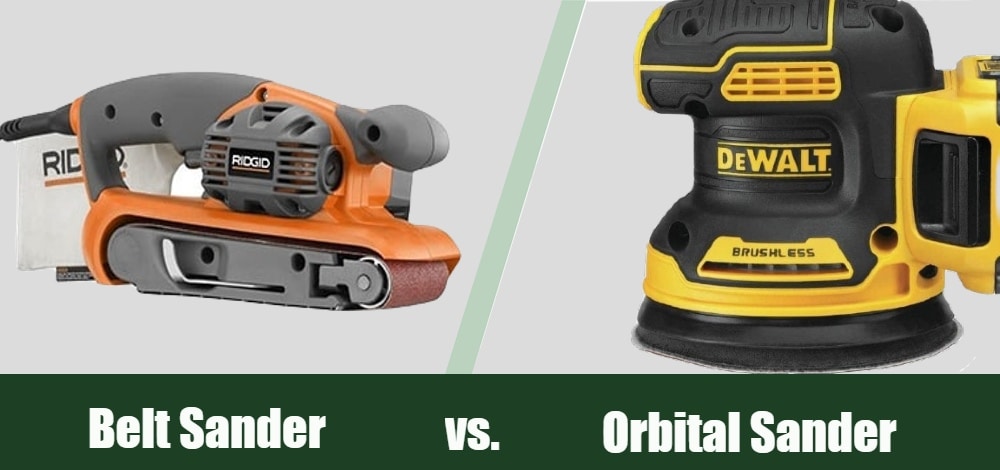

Though there are various sanders, belt and orbital sanders are the most popular. They are both great for working with furniture and wood floors, but you shouldn’t use them interchangeably. Since these tools are so similar, it can be difficult to know which one to choose.
Simply put, you should get a belt sander if you have large jobs, but you should get an orbital sander if you have small or rounded jobs. To learn more about belt and orbital sanders, keep reading. This article fully explains the difference between these sander types and how to use each.

Overview of Belt Sanders
A belt sander is an incredibly powerful tool that uses an electric motor to move a pair of drums. The drums rotate, which moves a loop of sandpaper over the surface to sand it down. Because of the design of the belt sander, it is a bit bigger than other handheld models.
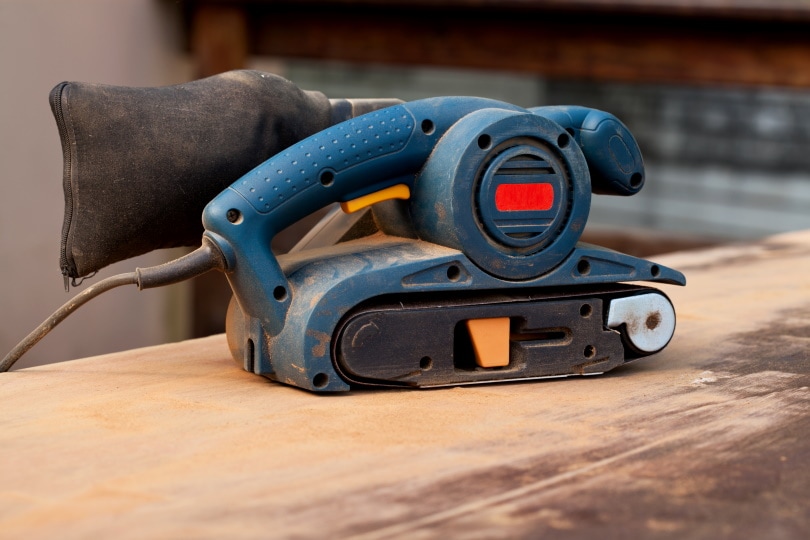
- Speed: The speed of a belt sander is measured in feet per minute, or how many feet the tool can sand in a minute. The higher the speed rating, the faster it moves and sands down the surfaces. Most belt sanders come with variable speed functionality to easily control the speed.
- Power: Belt sanders are known for their incredible power, which is measured in amps. Most belt sanders have power ratings between 8 and 11 amps. If you expect to do a lot of work, you should get a belt sander with a higher amperage.
- Varieties: The main difference between individual belt sanders is the speed and power. However, you have the choice between a stationary or handheld belt sander.
- Ideal Use: Belt sanders are ideal for sanding large surfaces and rough surfaces. For example, belt sanders are great for hardwood flooring and large pieces of furniture like tables. In comparison, belt sanders are not ideal for small pieces since they are too powerful.
- Incredibly powerful
- Works quickly
- Great for large surfaces and metal
- Not suitable for small surfaces
- Easy to sand down too much material
Related Read: 5 Best Belt Sanders – Reviews & Top Picks

Overview of Orbital Sanders
An orbital sander uses sanding discs and moves in small circles or orbits. The swirl designs make it easy to sand down surfaces in a short amount of time. Because of the circular pattern, the sanders can leave swirly marks on whatever items you are sanding.
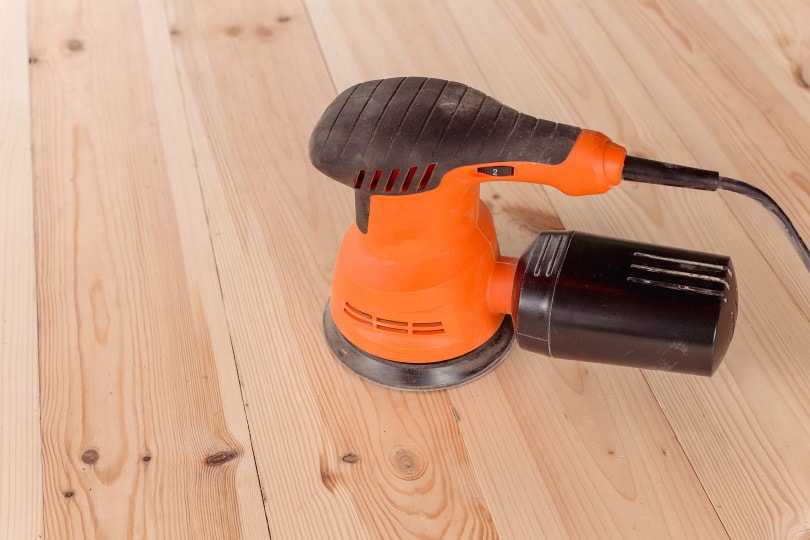
Speed
With orbital sanders, the speed is measured in how many orbits the tool can move in a minute. Most orbital sanders move at around 10,000 orbits per minute. The faster the tool can move, the faster you can get the job done. So, you always want to look for high speeds, especially when working on large surfaces.
Power
The power of orbital sanders is measured in amps. As you probably know, the more amps listed, the more powerful the sander is. Orbital sanders aren’t powerful enough to remove a lot of surface area at once. If you need to remove a lot of material, you might want to consider a different tool, such as the belt sander.
Varieties
Most brands produce similar orbital sanders, but the handle design often differs. There are three main types of handles:
- Pistol-Grip Handles: Offer maximum control because you use both hands; usually on professional sanders
- Jug-Grip Handles: Ideal for using the sander underneath furniture
- Palm Grip Handles: Most common because they are easy to hold, small, and comfortable
Orbital sanders also come in corded and cordless models. Corded models are more powerful, but the cord length limits them. In comparison, cordless sanders can go anywhere, but they aren’t as powerful.
Ideal Use
Orbital sanders are best for getting into tricky corners and working on rounded edges. They are also ideal when sanding a surface that will be treated later. You should not use an orbital sander if you do not treat the wood after sanding since it can leave swirls.
- Great for corners and rounded areas
- Gets the job done quickly
- Several varieties to choose from
- Can leave swirl marks
- Not the most powerful
Related Read: 10 Best Random Orbital Sanders – Reviews & Top Picks

What Are the Differences?
There are three main differences between belt and orbital sanders:
Power
Belt sanders are noticeably more powerful than orbital sanders. They are so powerful that it is easy to sand off too much material with a belt sander. Conversely, orbital sanders are not as powerful, but they have the perfect amount of power if you are worried about sanding away too much material.
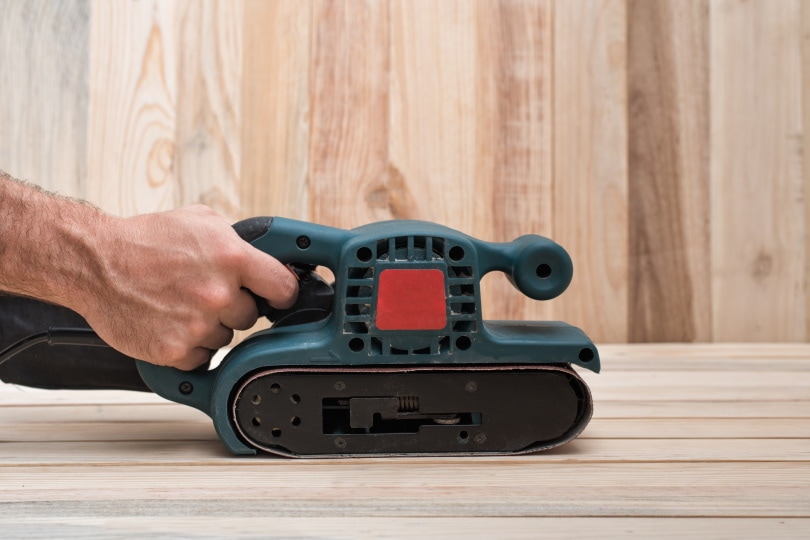
Sanding Mechanism
The sanding mechanism on the sanders is different. With belt sanders, the sandpaper is moved in a loop so that it sands down the material quickly. Orbital sanders are different because the sandpaper is laid flat on the surface and rotated in a circle. The sandpaper is often attached to the orbital sander with a peel-and-stick or Velcro system.
Sanding Grit
The sandpaper used on the sanders differs, too. Orbital sanders are the easiest because you can use practically every type of sandpaper. Belt sanders need a specific type of sandpaper since they are moved in a loop. Belt sander sandpaper is more expensive as a result.
When To Use Which?
Even though belt and orbital sanders are similar, you shouldn’t use them interchangeably. Here are a few examples of when to use which:
- Large surface jobs
- Leveling rough surfaces
- Creates even and smooth finishes
- Jobs that won’t have additional treatment after sanding
- Small surface jobs
- Corner jobs
- Rounded surfaces
- Jobs that will have additional treatment after sanding
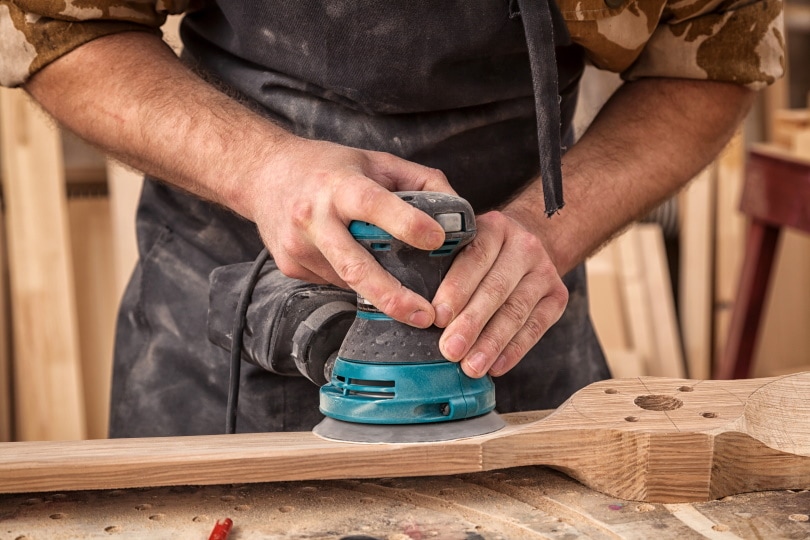
Which Is Right for You?
The sander that is right for you depends entirely on your needs and projects. Belt sanders are ideal if you work on large, flat surfaces that require a lot of sanding power. In comparison, orbital sanders are better for small jobs or rounded surfaces. If you are worried that you don’t have a delicate enough hand for a belt sander, the orbital sander is the better choice.

Conclusion
Ultimately, belt and orbital sanders are great tools that perform similar functions. If you’re interested in DIY projects and woodworking, they are essential tools to have in your shop. However, it’s best to use a belt sander if you have big jobs and an orbital sander if you have small jobs. Better yet, get both so you can perform a wide range of jobs!
- See Also: 8 Types of Floor Sanders (With Pictures)
Contents

